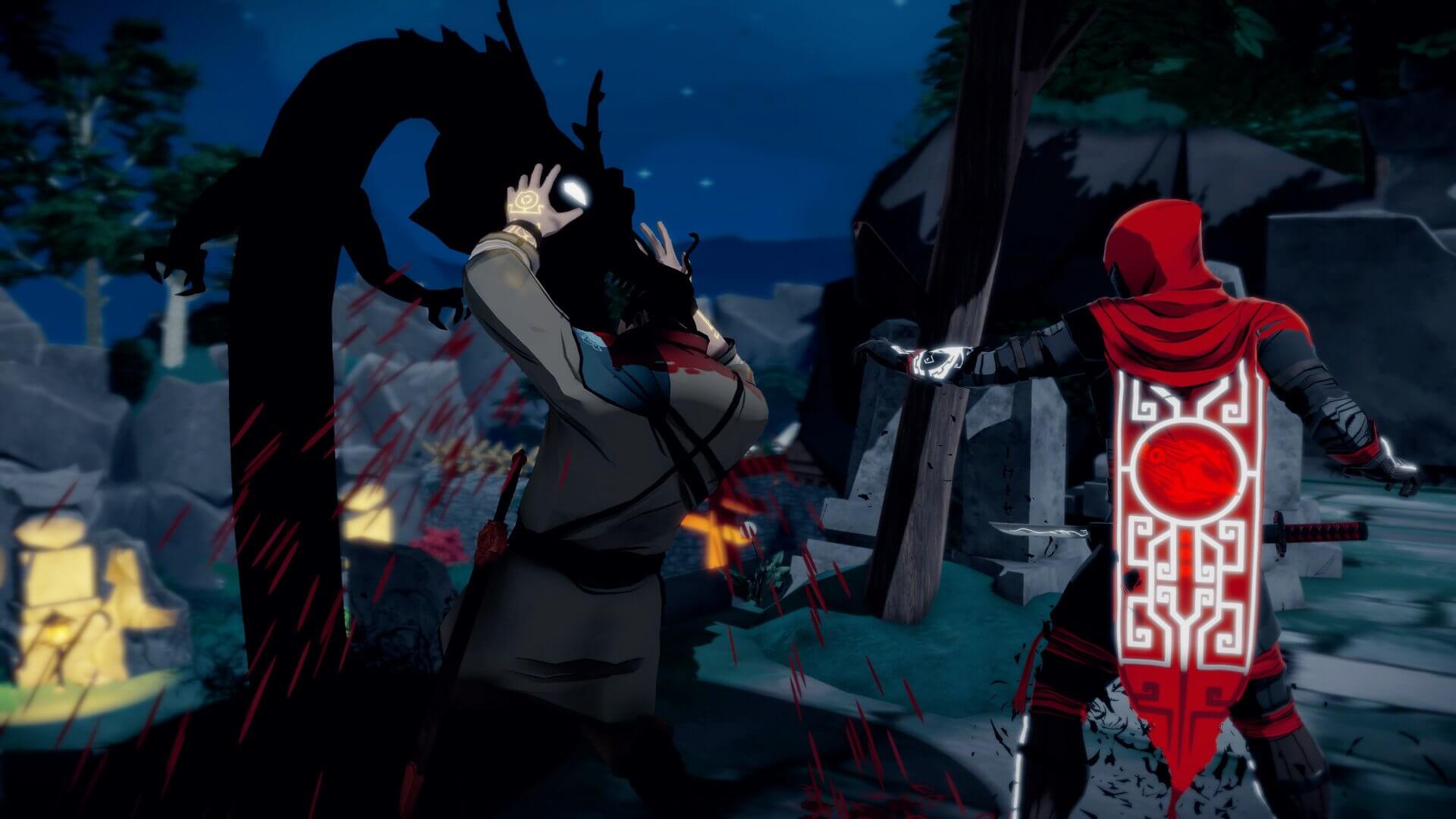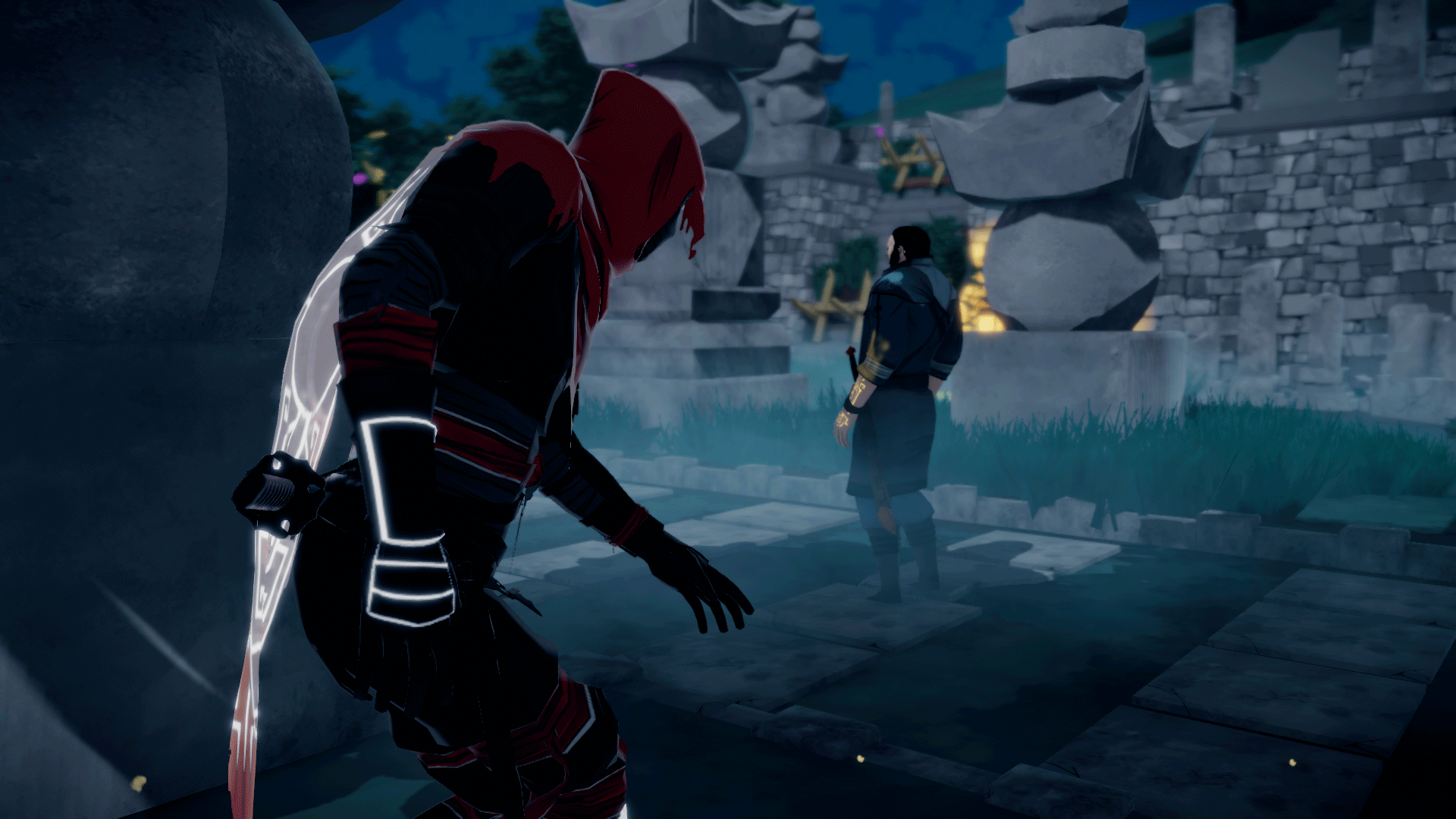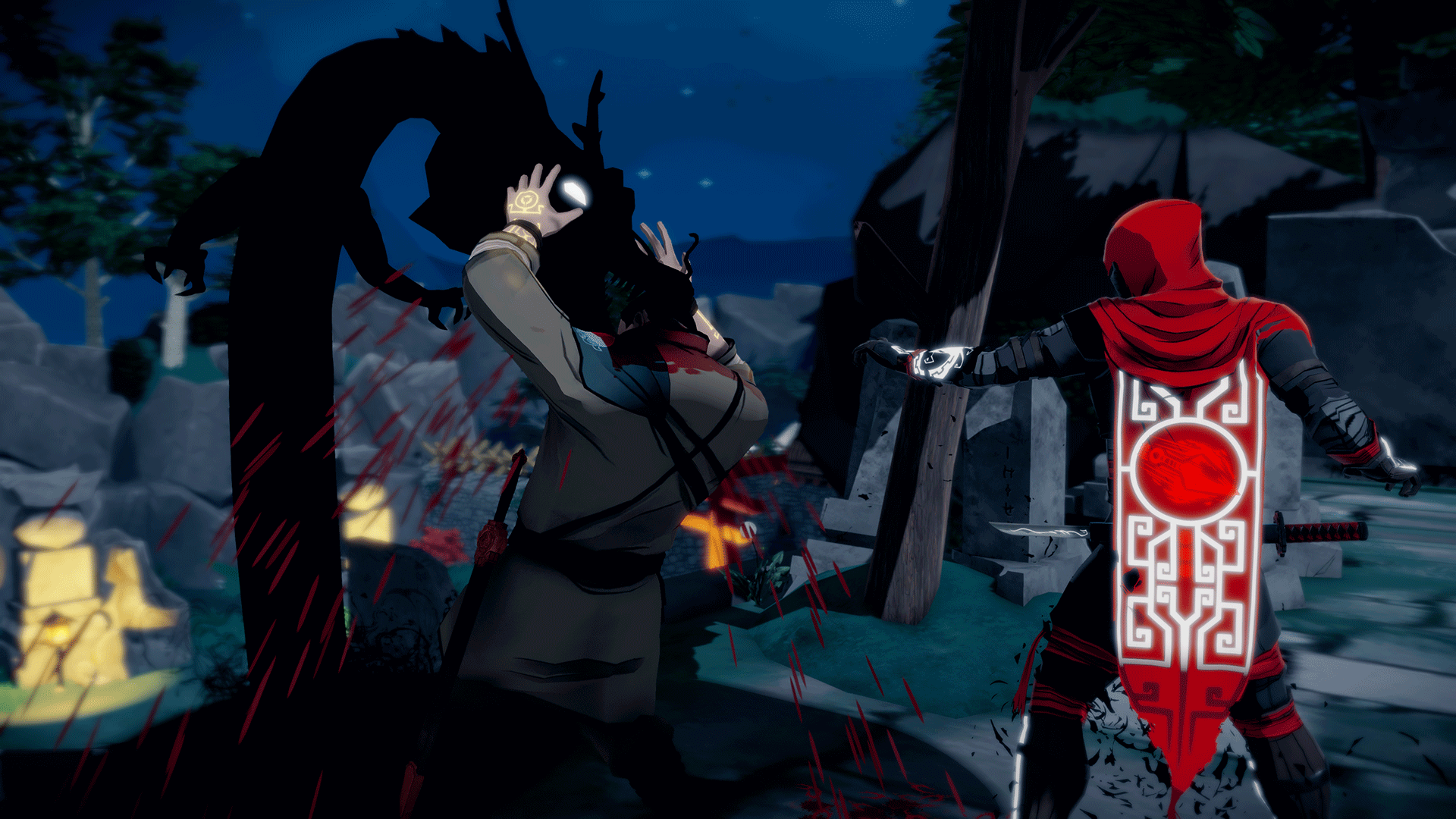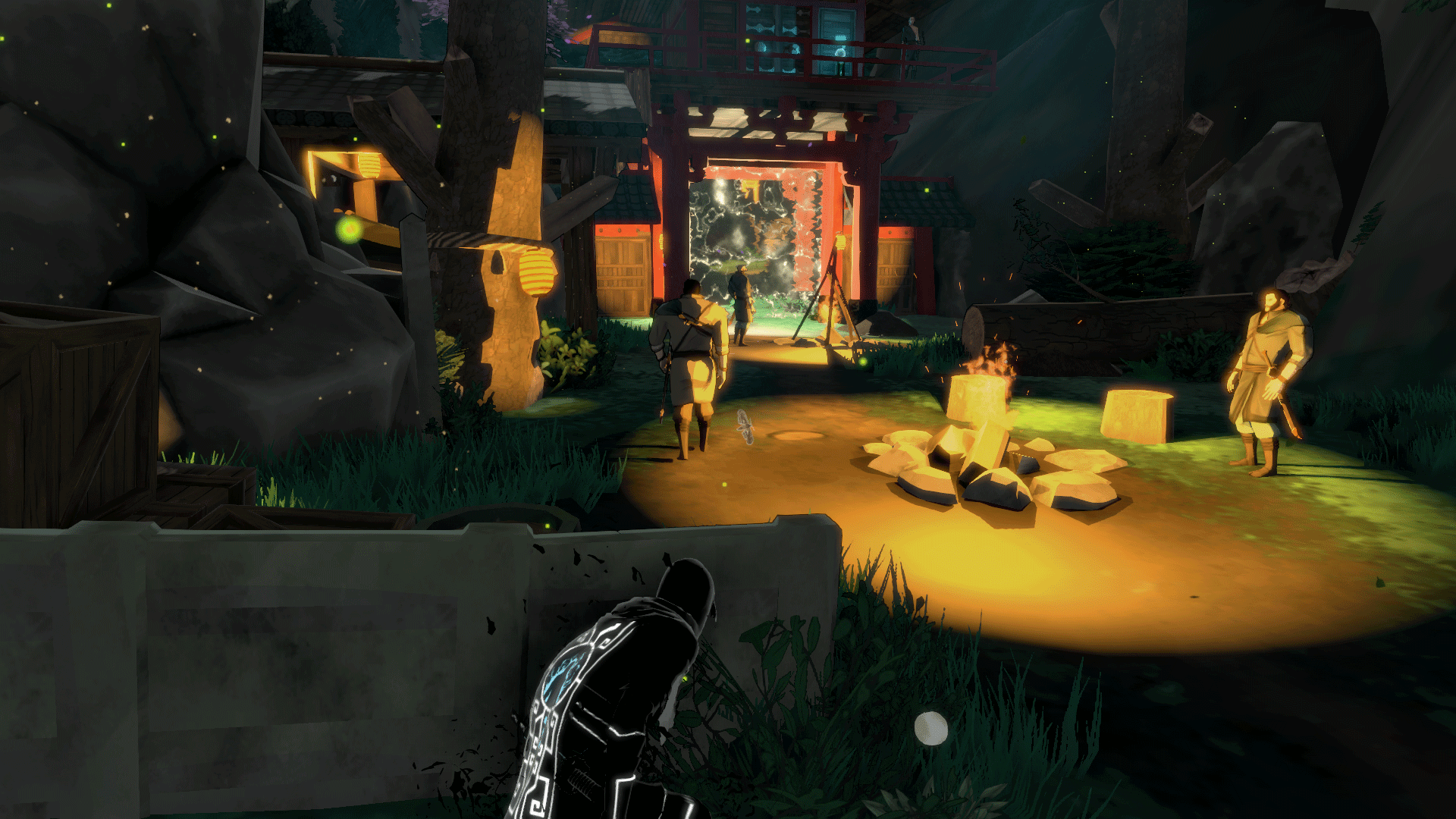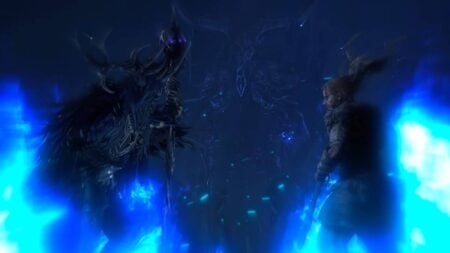Title: Aragami
Version Tested: PlayStation 4
Available On: PlayStation 4, PC
Developer: Lince Works
Publisher: Lince Works, Merge Games Ltd.
Genre: Stealth
Official Site: https://aragami-game.com/
Release Date: October 4, 2016
Where to Buy: Steam, PlayStation Marketplace
No veteran of the stealth genre is new to staying in the shadows, but Aragami is a game that takes this idea just a little further. With the ability to leap between shadows and even create them, Aragami felt distinct enough to earn its place in the stealth genre. With new ghost and demon powers to unlock and 13 chapters to sneak through, Aragami manages to be a worthy stealth title, but not without a few glaring issues.
The player takes control of Aragami, a vengeful shadow spirit summoned by a mysterious girl Yamiko. She tells Aragami that she’s being held captive and needs his help, and so begin the events of the single night in which the game takes place. Most of your time in Aragami is spent sneaking through battle camps and castles, avoiding guards and retrieving talismans to dispel the force that traps Yamiko while learning more about her past and the mysterious circumstances surrounding Aragami’s summon. It accomplishes this with some clumsy dialogue and a pretty standard fare story, but by the end, it feels as if Aragami’s tale had managed to drum up some honest intrigue.
The shadow-based stealth mechanics felt like more than a simple gimmick. Being able to instantly jump between shadows changed the stealth format in some pretty key ways. A guard approaching your position is stressful in most other stealth titles, but in Aragami, you’re given the ability to handle this with ease.
Not to say it’s an easy game. Your abilities are countered with guards who will kill with a single hit, snipers with improved vision, and light explosives that can either kill Aragami or give away his position.
Demon and Ghost powers can be unlocked by finding hidden scrolls scattered throughout every mission. These new abilities seem like well-considered extensions of the existing shadow based gameplay, and the guards seemed as if there were all carefully placed with the use of each of these abilities in mind. After becoming comfortable with these abilities I stopped thinking about which would be the most effective, but which would be the most fun to use, which is a big point in Aragami’s favor.
A total of 3 medals can be earned for each chapter; one for completing a mission undetected, one for not killing any guards, and one for killing every guard. These medals encourage players to try chapters in different ways, and the approach to doing a lethal run or a pacifist run will give the player a vastly different experience. With 13 chapters, altogether clocking in at about 10 hours, facilitating replayability is a worthy goal, and the designers of Aragami have pulled this off tremendously. Instantly being able to re-select any chapter in the menu encourages players to go back, play each chapter with different techniques, earn every medal and aim towards getting an S rank for all chapters.
This was a satisfying task to complete, and by not having these medals and their respective play styles affect the narrative, the designers of Aragami narrowly avoid the Dishonored pitfall, where the player was given cool new weapons and techniques for killing guards, and then punished with a bad ending for using any of it. Aragami isn’t about discouraging fun for the sake of a better narrative. Its bottom line is having fun, and for that, it earns my gratitude, especially because when it is working properly, it’s a sincerely enjoyable game. It was always satisfying to carefully shadow jump through one guard patrol after another. Aragami is at its best when all of your abilities come together, allowing you to sneak through what seemed liked an impossibly fortified area.
Unfortunately, I felt the need to specify that it’s enjoyable when it’s working properly because Aragami is a game that’s riddled with numerous technical issues. As the game progresses, the cracks in Aragami’s design become more and more pronounced. Generally speaking, the harder a game becomes, the more reliant the player becomes on responsive controls, and on the game being tightly designed.
For all the things Aragami is, a tightly-designed game it is not.
Throughout my play, I was hit through walls, unable to activate certain abilities when I needed them and was led to misleadingly switched objective points quite often. The AI has a tendency of getting stuck and glitching out of patrol paths endlessly. Once, an alert was triggered leading to my death, but upon respawning the alert was still active.
Spending 20 minutes methodically taking out guards only to have an ability malfunction resulting in my death is frustrating, to put it as lightly as possible. When a player dies and it’s more the fault of the game than their play, that’s one of the worst problems a game can have.
Aragami consistently suffered from frame rate dips and odd loading problems as well. Here they’re especially maddening since it isn’t exactly a graphically intensive game. The character models were clearly designed with a highly-stylized appearance in mind, but graphically the environments of Aragami feel like they could have been played on something a few consoles back. The environments all feel unimpressive, decently designed in their structure, but undetailed enough for it to be noticeable, as most “textures” are simple images on a clearly flat surface.
Unfortunately, the many problems that harm the Aragami experience aren’t limited to technical issues. A third person camera made it so often environments would come between the camera and my view of Aragami, which prevented me from getting a clear view of my surroundings in several places. This becomes an increasingly serious problem as the game progresses and a larger number of guards must be dealt with at once.
The number of charges Aragami has for a specific power is displayed on the back of his cape, rather than on a HUD. While I really love how stylized this looks, Aragami’s cape has a tendency of getting caught behind his sword or folded in odd ways around his character model, leaving the number of demon or ghost power charges impossible to see.
Aragami can unlock an ability to see all hidden scrolls locations, which is attached to his ability to hone in on the next objective. Since the button for these abilities is the same, it can be a little frustrating to activate this ability just to look for scrolls and having your view forced towards the objective every time.
The gameplay would have benefited from a bit of fine tuning, but the technical issues here are without a doubt the biggest flaw Aragami suffers from. While it does manage to be fun at times, you’re more likely than not to be glitched out of a completely enjoyable experience.
It’s a shame because there’s so much that Aragami manages to get right, but every time I encountered some new frustrating technical problem, I liked the game just a little less. I commend the tweaks to the stealth formula, the consideration to the player as far as replayability goes, and even the addition of a multiplayer mode that doesn’t add much to the experience, but is a nice inclusion all the same. While many of the key decisions had the right idea, the vast level of technical issues really ended up holding Aragami back from being something greater.
- Gameplay: Satisfying and fun, when it does manage to function properly.
- Graphics: Entirely unimpressive. Stylized character models don’t make up for poor environments.
- Sound: Music is restrained, peaceful, and well-handled for a stealth title.
- Presentation: Sloppy. Glitches, frame rate dips, and loading problems are very abundant.
[review]

